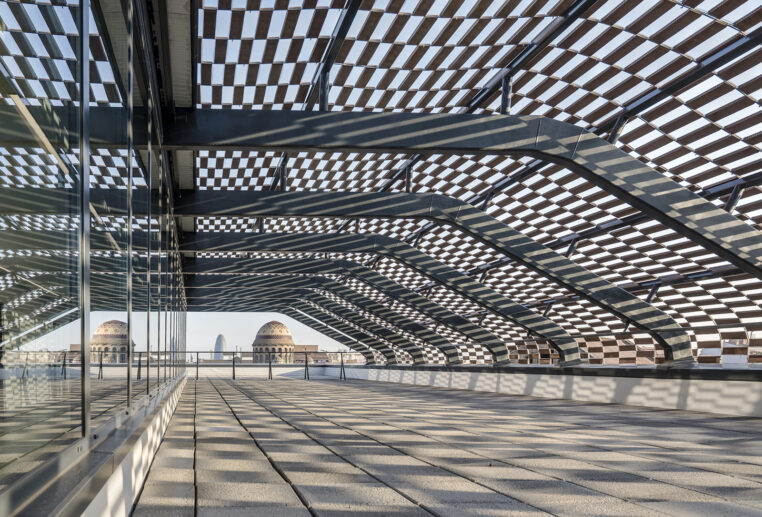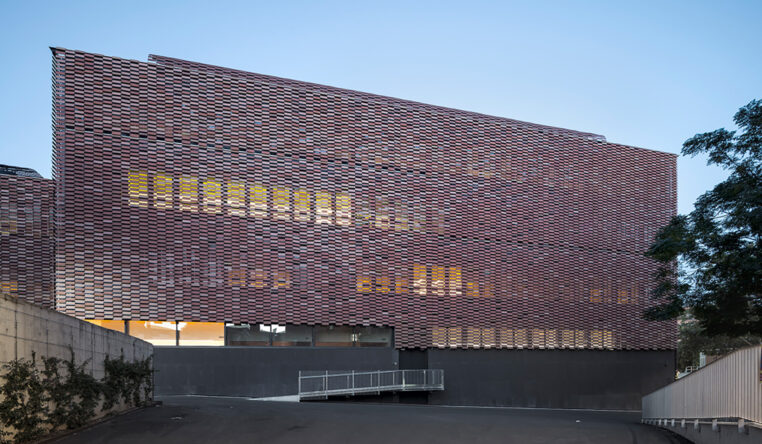Receiving first prize in the 2019 edition of the Tile of Spain Awards, the Research Institute of the Hospital de Saint Paul is a uniquely constructed building conceived as a technological infrastructure with a deep commitment to global sustainability.

Crafted by PICHarchitects/Pich-Aguilera and 2BMFG Arquitectes, this groundbreaking center located in Barcelona, Spain, offers the connecting hospital a high degree of functionality and comfort, optimum environmental performance, as well as enhanced energy consumption, thanks to the team’s lifecycle centered design approach. The Institute was planned from a circular-economy perspective, that allows for the consideration of updating its internal and external composition in the future, with higher-performing building supplies.
The arrangement of the institute has been organized by volumes with a clear geometrical shape set between the city roads of Santa Creu and the hospital’s complex. Dry construction systems were used to craft the foundation, the first layer of the facade, the surrounding ceramic envelope, and the interior walls and floors of the research center.
It was this unparalleled concept that earned the project recognition by the Tile of Spain Awards judging panel. Members of the jury were impressed by the strategic use of building materials, more specifically, the use of ceramics to mimic the building’s internal and external environment.
The building is cased in an industrialized system of 45,000 flexible ceramic panels, arranged in a shiner pattern. The panels envelop the façade, acting as in a transparent “ceramic skin” to create a harmonious balance between the interior and exterior of the research center.

The system was specifically tailored for the building so that it would blend in with the historical aesthetic of the surrounding city, while also integrating modern design technology.
The pieces that make up the ceramic system are held together by a complex network of woven steel mesh and feature a slight fold so they are angled like an eave to take advantage of the sun’s rays. The tiles that adorn the south-facing side of the facade have a horizontal fold, while the pieces that do not receive direct sunlight have a lateral one.
The outer face of the ceramic tiles has been glazed in several terracotta hues, mirroring the exquisite brickwork of the nearby buildings. The base of the tiles has been coated in vibrant shades of yellow and blue, reflective of the domes of various properties in the vicinity.


As a whole, the entire ensemble has a geometric scaled texture, with a cadence and rhythm that change during the course of the day. Externally, its colors alter in correspondence with the sun and its reflections, while from inside, the bright colored glaze can be seen and light is filtered into the building’s rooms to offer researchers privacy.

Para más proyectos, productos y noticias de Tile of Spain, asegúrese de seguirnos en Facebook, Instagram, Gorjeo Y Pinterest.

